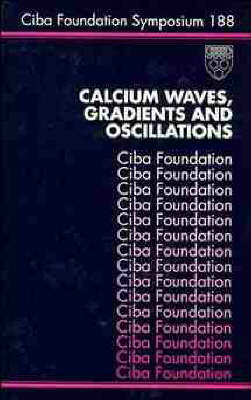
Calcium Waves, Gradients and Oscillations
John Wiley & Sons Ltd (Verlag)
978-0-471-95234-3 (ISBN)
- Titel ist leider vergriffen;
keine Neuauflage - Artikel merken
Calcium Waves, Gradients and Oscillations Chairman: Michael J. Berridge 1995 Standing free gradients are widespread in living systems and changes in intracellular free Ca2+ concentration, [Ca2+]i, are involved in controlling the responses of cells to many stimuli. Imaging techniques have revealed complex patterns of Ca2+ distribution arising spontaneously or after stimulation of cells by hormones or neurotransmitters. In many cells, Ca2+- mobilizing agonists stimulate oscillations in [Ca2+]i, with the frequency of the concentration rises ( spikes') depending on the agonist concentration and the external Ca2+ concentration. The Ca2+ spikes are organized spatially as well as temporally, so that a regenerative wave spreads across the cell. Such Ca2+ waves have been observed in many cell types: in hamster eggs, fertilization stimulates a Ca2+ wave that spreads from the point of sperm entry to the opposite pole; in Xenopus oocytes, the Ca2+ signal is initiated at several foci, with the waves spreading out symmetrically to give spheres or asymmetrically to give spirals.
Most of the models proposed to explain the initiation and propagation of Ca2+ waves involve positive feedback, with Ca2+ amplifying its own release through an action on phospholipase C, generating periodic surges of inositol 1,4,5-trisphosphate (InsP3), or through Ca2+- induced Ca2+ release. Propagation seems to depend on the regenerative release of Ca2+ from internal stores controlled by the InsP3 receptor or the ryanodine receptor. This book features studies of intracellular Ca2+ gradients, oscillations and waves in various systems. Calcium gradients are best understood in tip-growing plants cells, medaka (fish) eggs and the mould Dictyostelium. Current knowledge of the initiation, propagation, characteristics, functional consequences and physiological significance of Ca2+ oscillations and waves in heptocytes, in Cl- secretion from pancreatic acinar cells, in heart muscle cells and in neurons is presented. The mechanisms, form and importance of Ca2+ waves in Xenopus oocytes and in mammalian fertilization are considered.
The biochemical basis of Ca2+ signals can spread as waves from cell to cell, through the action of a secreted intermediate (ATP) or by diffusion of InsP3 or perhaps Ca2+, across gap junctions; studies of this process in epithelial cells and glial cells are featured. Related Ciba Foundation Symposia: No. 183 Circadian clocks and their adjustment Chairman: J. M. Waterhouse 1995 ISBN 0 471 94305 3 No. 164 Interactions among cell signalling systems Chairman: Y. Nishizuka 1992 ISBN 0 471 93073 3
Calcium Waves and Development; Subcellular Organization of Calcium Signalling in Hepatocytes and the Intact Liver; Calcium Puffs in Xenopus Oocytes; Spiral Calcium Waves: Implications for Signalling; Local Calcium Spiking in Pancreatic Acinar Cells; Pancreatic Calcium Waves and Secretion; Calcium Signalling During Chemotaxis; Calcium Signalling and Localization of Endoplasmic Reticulum in Ascidian Oocytes; Calcium Signalling in Cardiac Muscle Cells; Calcium Sparks in Cardiac Muscle; Intercellular Calcium Waves Mediated by Inositol Trisphosphate; the Triggering of Astrocytic Calcium Waves by NMDA-induced Neuronal Activation; Calcium Oscillations in Neurons; Calcium Signalling During Mammalian Fertilization; Regulation of Nuclear Calcium Concentration.
| Erscheint lt. Verlag | 23.3.1995 |
|---|---|
| Reihe/Serie | Ciba Foundation Symposium ; No. 188 |
| Verlagsort | Chichester |
| Sprache | englisch |
| Maße | 155 x 235 mm |
| Gewicht | 580 g |
| Themenwelt | Naturwissenschaften ► Biologie ► Biochemie |
| Naturwissenschaften ► Biologie ► Zellbiologie | |
| ISBN-10 | 0-471-95234-6 / 0471952346 |
| ISBN-13 | 978-0-471-95234-3 / 9780471952343 |
| Zustand | Neuware |
| Informationen gemäß Produktsicherheitsverordnung (GPSR) | |
| Haben Sie eine Frage zum Produkt? |
aus dem Bereich


